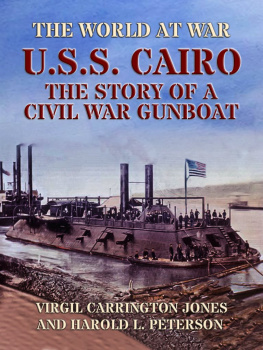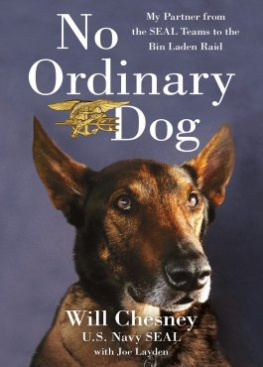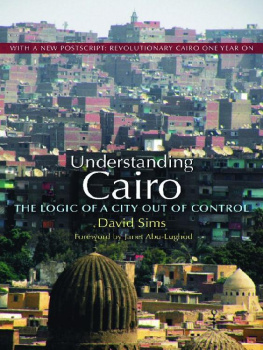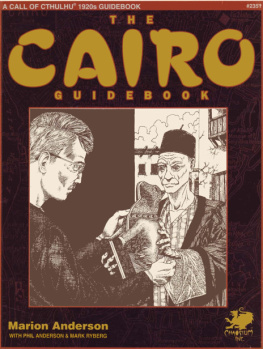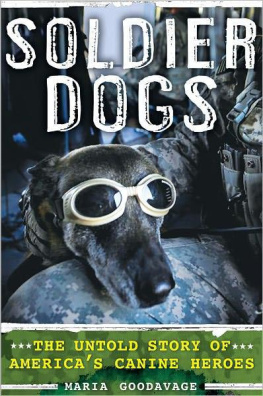The author and publisher have provided this e-book to you for your personal use only. You may not make this e-book publicly available in any way. Copyright infringement is against the law. If you believe the copy of this e-book you are reading infringes on the authors copyright, please notify the publisher at: us.macmillanusa.com/piracy.
This may not be quite the story you are expecting. I might as well make that clear now.
I served thirteen years in the US Navy, including eleven as a member of the elite Sea, Air and Land (SEAL) teams. I participated in hundreds of operations as part of the global fight against terrorism.
I was on the ground in Pakistan in the spring of 2011, when the worlds most wanted terrorist, Osama bin Laden, was finally brought to justice.
Its fair to say that I have seen some battles. But that is only part of the story here, and not the most important part. I had the privilege of serving alongside some of the bravest men you could hope to meet.
But I also had the honor of working with an unsung hero whose role in the modern military is hard to comprehendunless you served with him or one of his fellow four-legged warriors.
I grew up with dogs, but I didnt understand how much canines were being used in the military until I became a SEAL and began to hear the stories. I remember walking into a training room once, early in my career, and hearing the following order:
Raise your hand if your life has ever been saved by a dog.
Most of the men in the room lifted their arms. They did not laugh. They did not smile. This was serious business.
A dog can save your life? Absolutely. In my case, many times over. Both on and off the battlefield.
This is my story, but it is also the story of one of those military working dogs, or MWDs. To be precise, he was part of a highly trained subset of MWDs known as combat assault dogs. And he was the most famous combat assault dog ever, thanks to his participation in the raid on bin Ladens compound. He was a canine SEAL named Cairo, a seventy-pound Belgian Malinois who jumped out of planes, fast-roped out of helicopters, swam across streams, sniffed out roadside bombs, and disarmed bad guys.
Cairo did everything expected of his human counterparts. He did it with loyalty and courage. I would have taken a bullet for him, and he did, in fact, take one for me. This is his book as much as it is mine. Maybe more.
I first met Cairo in the summer of 2008. Id been in the navy for six years, almost all of it as a SEAL. I was stationed in Virginia, satisfied with my work, and not really looking for any big changes. But then I was introduced to the canine program, and it caught my interest.
Fortunately, in those days, experience was not a requirement for becoming a dog handler. All I had to do was express an interest in the job, and suddenly there I was, attached to a magnificent Malinois! German shepherds, Dutch shepherds, and Labrador retrievers have also been used in the military. But the Malinois, which is basically a smaller, more agile version of the shepherd, is the ideal military dog.
Not everyone is a dog person. And not every SEAL wants to babysit an animal both at home and when they are on deployment. (A deployment is a long trip overseas to perform a series of missions. Most deployments last a few months.) My fellow SEALs were all happy to have Cairo out in front of us when we approached an enemy compound in the middle of the night. And when not on the job, he was a playful, friendly dog. Just about everyone loved him.
But to take on the burden of being a dogs handler? That was left to someone who really wanted the job.
That was me. Cairo was my dog. And I was his dad.
The relationship between a handler and a canine SEAL is profound and intimate. It goes well beyond friendship. The training is challenging and endless. It is designed to foster not just expertise but a deep and complex attachment.
Anyone who has ever shared his life with a dog understands the two-way nature of the relationship. A dog relies on his master for food and shelter. He responds with unconditional love and loyalty. Take that relationship and multiply it by a hundred, and then factor in the almost unimaginable bond that is forged when a dog risks his life for you.
Then youll get an idea of what it was like for Cairo and me.
So, yes, in a very real sense, I was Cairos dad, as close to him as a father is to a son.
He was three years old when I met him. He had already graduated from a class of potential military candidates. He was a dog with not only freakish athletic ability but a tireless work ethic.
In other words, he was a dog who might become a SEAL.
But there was something else about Cairo that made him special: a laid-back personality that in other dogs might be cause for dismissal. A military working dog must be a fighter. In many cases that trait is not easily paired with companionship.
Cairo was different. He had the ability to throw a switch. He was gentle with people of all ages. But when it was time to go to work, he would work. He had a ferocious drive to hunt, perform, and serve. He was fearless.
That isnt quite true, of course. Everyone who has walked into battle experiences fear, pain, and exhaustion. Dogs are animals, driven by instinct. They naturally withdraw from danger. They rest when they are weary. Just like humans. It shouldnt come as much of a surprise to learn that its almost as rare for a dog to become an MWD as it is for a human to become a SEAL.
It isnt for everyone. Lets face it: Most people dont want to enlist in the navy. And most people in the navy dont want to endure the agony of SEAL training. Of those who do take the plunge, most soon discover they are in over their heads. In fact, only 20 percent of the men who enter the thirty-week SEAL training program known as Basic Underwater Demolition/SEAL (BUD/S) complete the program. The rest are weeded out not through injury or failure but through the simple act of surrender.
They quit.
The whole point of BUD/S is to find the true warriorsmen who will not quit under any circumstances.
The same idea applies to developing military working dogs. Physical skill is useless if a dog freezes at the sound of a rocket propelled grenade (RPG) exploding into a hillside, or if he is afraid to enter a dark and dangerous building.
Its not natural for dogs to do these sorts of things. Its not normal . But some of them do. Cairo was one of them. Did he realize he was risking his life for me and my brothers? Probably not. But he knew that his work was dangerous; I dont doubt that for a second.
In the mountains of Afghanistan, on mission after mission, Cairo was a fighting machine. He was a military asset as valuable as a rifle or night vision goggles. But when it was time to go home and hang out with Dad, he could do that as well. Wed sit on the couch and watch movies together. Hed eat steak right next to me. He would sleep in my bed. He could be trusted with strangers and kids.
He was a nearly perfect dog.
This book is my tribute to Cairo. Its a story about the amazing work he did in support of the US military, as well as what he did for me personally. We trained together, fought together, and lived together. He was, in many ways, my closest friend. I lost him for a while when our careers went in different directions, and then got him back long enough to care for him when his health failed. In return, he cared for me when I needed him most.



